10 Vintage Railroad Clocks That Are Highly Collectible
Vintage railroad clocks are not only functional timepieces but also valuable collectibles that reflect the rich history of rail travel. These clocks were once vital in keeping train stations and passengers on schedule. Today, they are highly sought after by collectors for their unique designs, craftsmanship, and historical significance. Many of these clocks were made by renowned clockmakers like Seth Thomas, Junghans, and Gents of Leicester. They come in various styles, including double-sided designs, wall clocks, and pocket watches, each with its own story.
This post may contain affiliate links, which helps keep this content free. Please read our disclosure for more info.
Gents of Leicester Double-Sided Illuminated Railway Clock
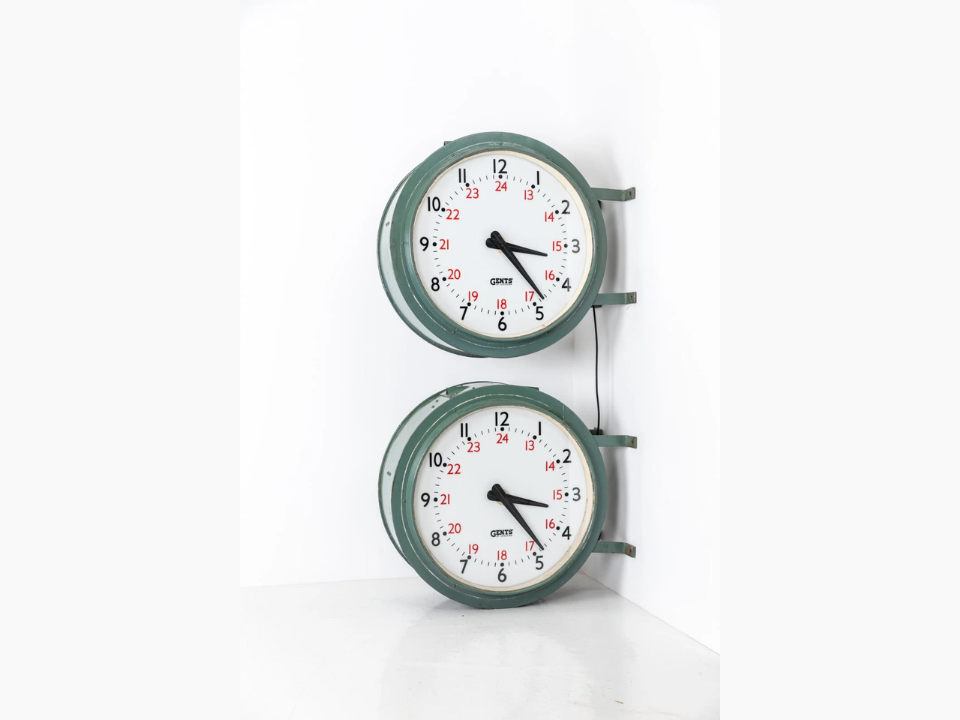
Manufactured in the mid-20th century, this clock is a notable example of British railway timepieces. Its double-sided design allows visibility from multiple angles, making it ideal for station platforms. The illumination feature ensures readability even in low-light conditions, a crucial aspect for railway operations.
Crafted by Gents of Leicester, a renowned British clockmaker, this model reflects the company’s commitment to quality and precision. Collectors value it not only for its functionality but also for its historical significance in the context of British railways. The clock’s robust construction and timeless design make it a prized possession for enthusiasts of railway memorabilia.
Estimated Market Value: $4,931
Pragotron Double-Sided Railway Clock

Originating from Czechoslovakia, this large double-sided clock was produced by Pragotron in the 1980s. Its industrial design is characterized by a steel frame and clear, easy-to-read numerals, making it suitable for both railway stations and factories. The clock’s dual faces allow passengers to view the time from different directions, enhancing its utility in public spaces.
Pragotron was known for producing durable and reliable timepieces during the communist era, and this model exemplifies their engineering prowess. Collectors appreciate the clock for its historical value and the insight it provides into Eastern European industrial design. Its availability in various sizes and conditions offers options for different preferences and budgets.
Estimated Market Value: $955–$1,135
Brillie Railway Clock
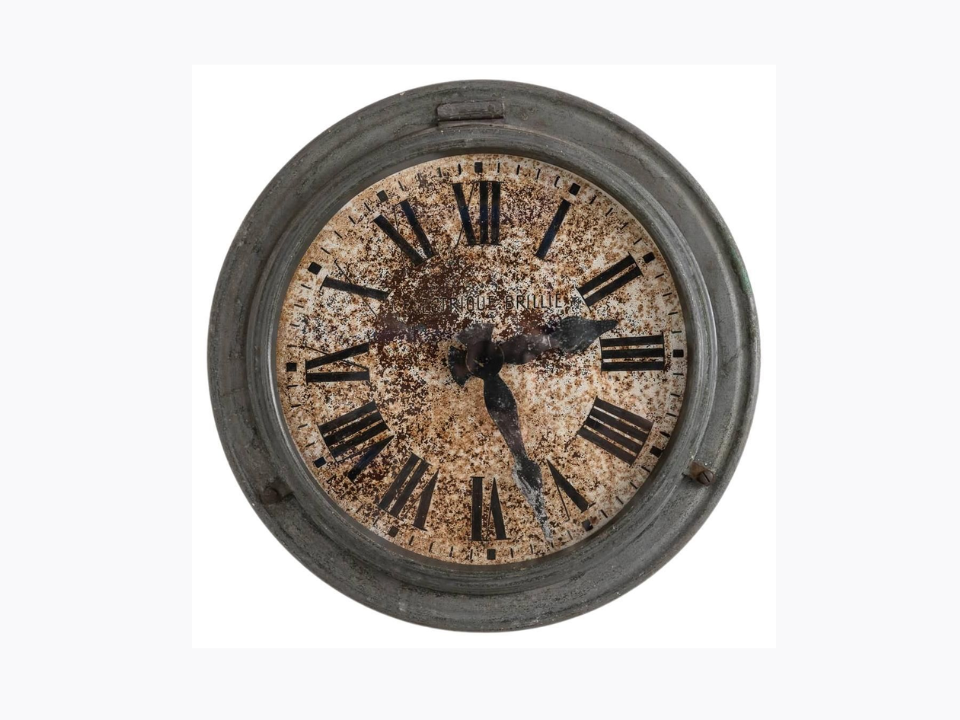
This French-made clock from the 1930s showcases the elegance of early 20th-century railway timepieces. Crafted by Brillie, a respected French clockmaker, it features a painted metal case with Roman numerals and a classic design that reflects the Art Deco influence of the era. Such clocks were commonly used in French train stations, symbolizing the nation’s rich railway heritage.
Collectors are drawn to this model for its aesthetic appeal and historical context. The clock’s craftsmanship and design make it a standout piece in any collection of railway memorabilia. Its relatively compact size allows for versatile display options, whether as a centerpiece or as part of a larger collection.
Estimated Market Value: €2,900 (approximately $3,100 USD)
E. Howard Marble Train Station Clock

Dating back to the 1870s, this American-made clock by E. Howard & Co. is a rare example of a marble-cased train station clock. The clock’s heavy marble case and intricate design reflect the opulence of the Gilded Age, a period known for its lavish architecture and public works. Such clocks were typically installed in prominent train stations and public buildings, serving both functional and decorative purposes.
Due to its age and rarity, this clock is highly sought after by collectors. The marble case, often adorned with ornate carvings, adds to its desirability. Owning such a piece offers a tangible connection to the grandeur of 19th-century American railway history.
Estimated Market Value: $2,800
Traditional English School Railway Clock
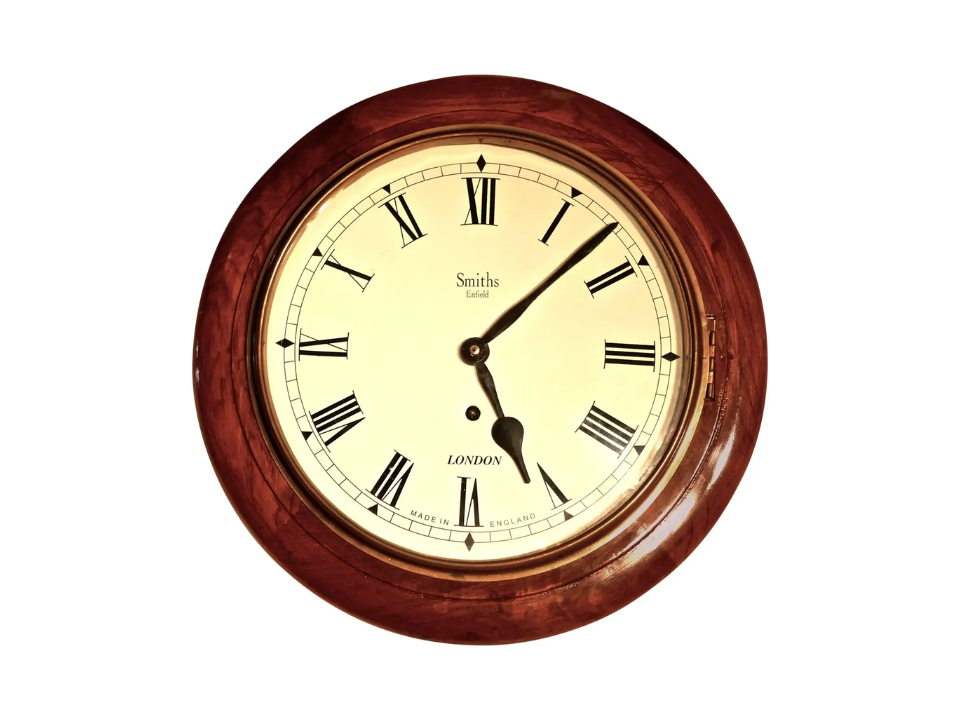
This early 20th-century clock by Smiths Enfield exemplifies the traditional English school or railway clock design. Made around 1910, it features a simple yet elegant design with a wooden case and clear, legible numerals. Such clocks were commonly used in schools and railway stations across the UK, providing a reliable timekeeping solution in public spaces.
Collectors appreciate this model for its historical significance and straightforward design. The clock’s functionality and aesthetic appeal make it a valuable addition to any collection of British railway memorabilia. Its enduring design continues to resonate with enthusiasts of vintage timepieces.
Estimated Market Value: $1,724
Junghans Railway Station Clock
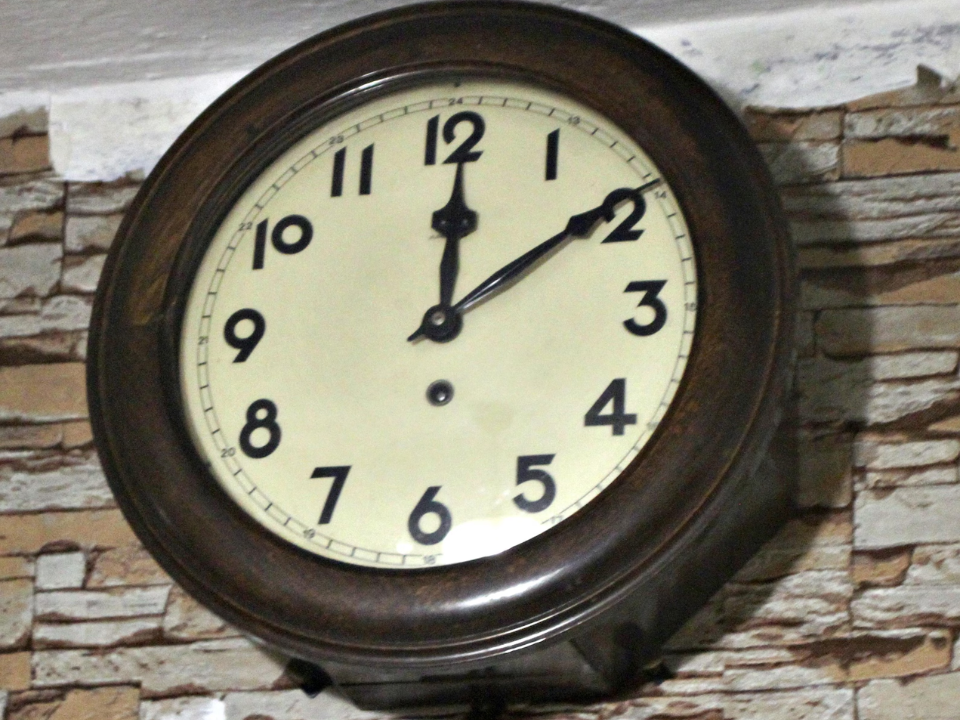
Manufactured by Junghans in the 1890s, this German-made clock is a prime example of late 19th-century railway station timepieces. Its large wooden case and iron dial reflect the industrial design trends of the era, while its robust construction ensures durability. Such clocks were typically installed in prominent railway stations, serving as both functional timekeepers and architectural features.
Collectors value this clock for its craftsmanship and historical context. The combination of wood and iron materials showcases the industrial capabilities of the time. Owning this piece offers insight into the design and functionality of railway station clocks from the late 19th century.
Estimated Market Value: Not listed
Telechron Double-Sided Milk Glass Train Station Clock
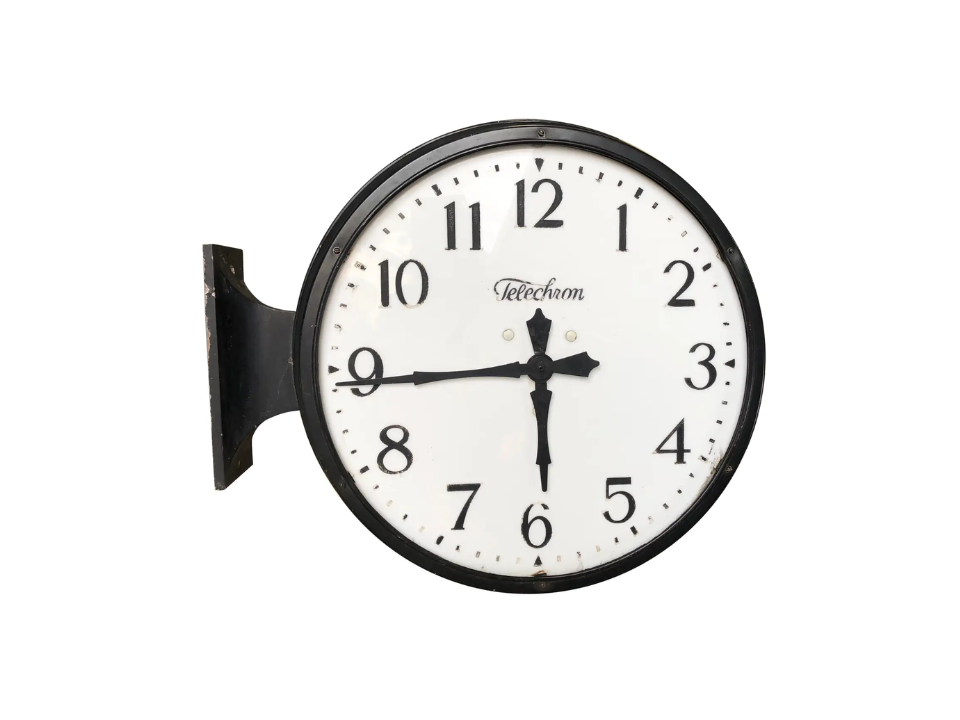
This American-made clock by Telechron features a double-sided design with milk glass faces, a distinctive feature of early 20th-century train station clocks. The clock’s design allows for visibility from multiple angles, making it ideal for installation in public spaces such as railway stations. The milk glass faces provide a soft, diffused light, enhancing readability in various lighting conditions.
Collectors are drawn to this model for its unique design and functionality. The combination of double-sided visibility and milk glass faces makes it a standout piece in any collection of railway memorabilia. Its design reflects the technological advancements of the early 20th century in public timekeeping.
Estimated Market Value: Not listed
Seth Thomas Regulator Westminster Chimes Railroad Wall Clock

This beautifully crafted wall clock by Seth Thomas is one of the most recognized regulator clocks used in railway offices. Designed in the early 20th century, it features Westminster chimes and a pendulum mechanism that highlights the fine engineering of its time. The solid oak case and clear face with bold numerals make it both functional and elegant, ideal for stationmasters and collectors alike.
Collectors admire the clock for its balance of durability and classic charm. The combination of quality materials and refined sound makes it a standout piece in vintage collections. Its timeless design continues to attract attention among those who appreciate traditional American clockmaking.
Estimated Market Value: $2,100
J. Allen Gruen Railroad Clock
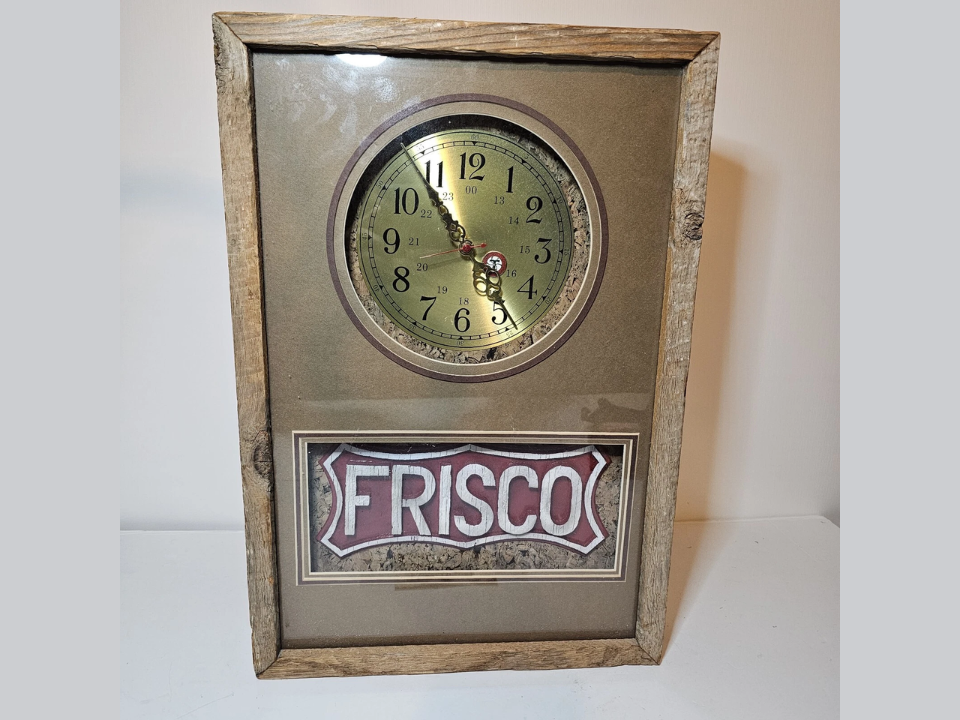
The J. Allen Gruen Railroad Clock represents precision and reliability from an era when train schedules relied heavily on accurate timekeeping. Produced in the early 1900s, this clock was favored by American railroad companies for its accuracy and mechanical dependability. Its metal casing, clear white dial, and large black numerals ensured easy visibility in station settings.
Collectors value this clock for its connection to American railway heritage. The Gruen name adds prestige, as the brand was well-known for quality timekeeping instruments. Its mechanical design and craftsmanship make it a desirable addition to any vintage clock or railway memorabilia collection.
Estimated Market Value: $1,850
Seth Thomas Double Spring Railroad Clock
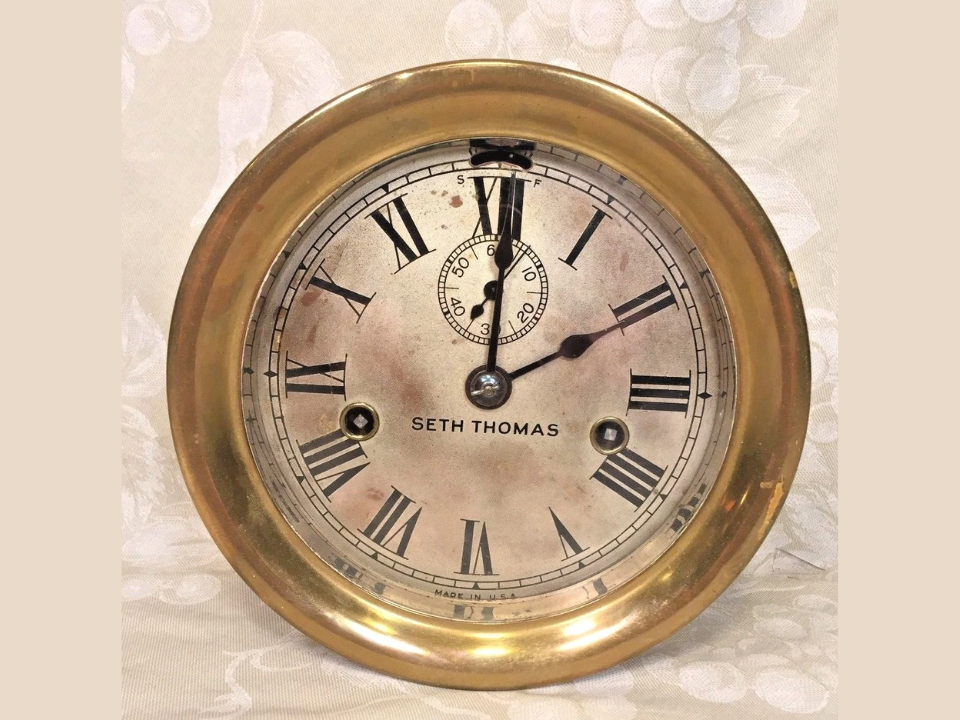
The Seth Thomas Double Spring Railroad Clock was engineered for endurance and precision, essential qualities in the railway industry. Produced in the early 1900s, this model used a dual spring mechanism to maintain steady timekeeping over extended periods. Its bold numerals and durable wooden case reflected Seth Thomas’ dedication to producing dependable railway timepieces.
Collectors appreciate the innovation of its double spring system, which allowed for longer intervals between windings. The combination of practicality and visual appeal makes it a prized example of early American mechanical engineering. This model remains a favorite among enthusiasts who collect clocks tied to industrial and transportation history.
Estimated Market Value: $2,600
This article originally appeared on Avocadu.
